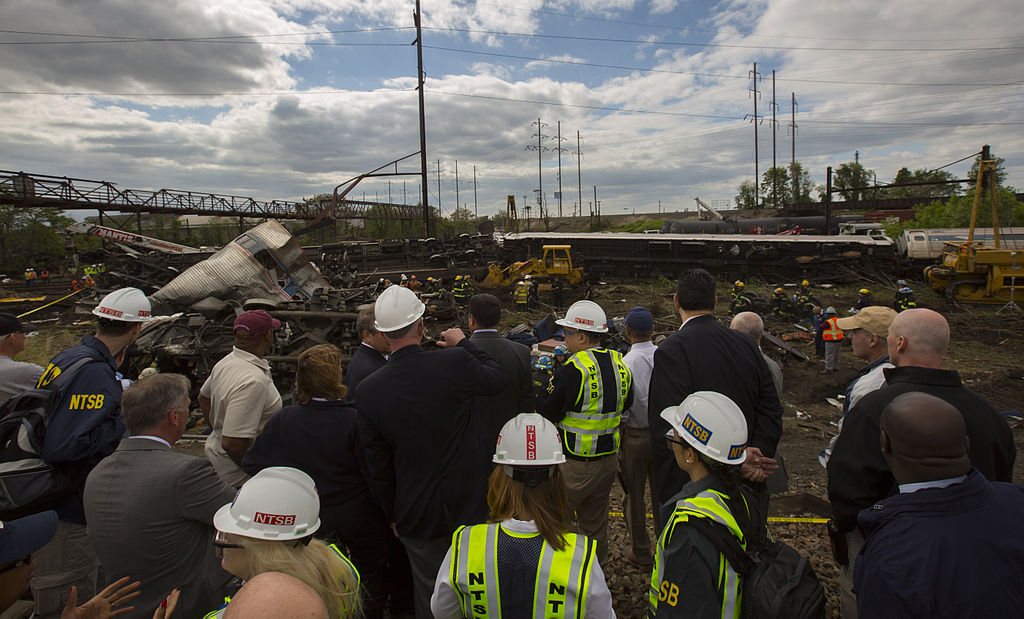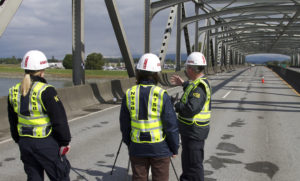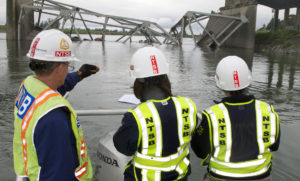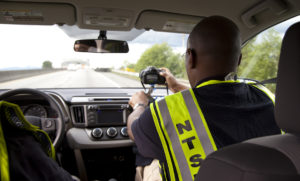The National Transportation Safety Board is an independent body within the federal government that investigates all plane crashes in the U.S., as well as significant crashes on our highways, and maritime and train accidents.
What does NTSB do?
Most people, if they’ve heard of NTSB at all, associate the organization with plane crash investigations.
They do investigate other incidents, including some fatal truck accidents crashes.
NTSB investigations are extremely thorough—they often take more than a year—they are reserved for incidents accidents with issues of:
“wide-ranging safety significance, such as collapses of highway bridge structures, fatalities on public transportation vehicles (such as buses and vans), and collisions at highway/rail grade crossings.”,
via NTSB.gov.

NTSB investigators arriving at the scene of an Amtrak train crash.
How does NTSB investigate truck crashes?
There are about 400 NTSB employees across the U.S.; in divisions including:
- Office of Aviation Safety;
- Office of Railroad, Pipeline & Hazardous Materials Investigations; and
- Office of Highway Safety.
The Office of Highway Safety (HS) is the division that investigates significant truck crashes.
After an incident, the NTSB deploys investigators who specialize in highway factors, vehicle factors, survival factors, and commercial motor carrier operations.
The investigation findings are submitted for a report.
The NTSB Reports Division looks at the specific incident in context with other crashes and federal rules and regulations.
The final NTSB crash investigation report: 1) breaks down the factors that led to the crash in question, and 2) makes recommendations to enhance public safety and to prevent future significant accidents incidents.
An NTSB crash investigation
On a breezy day in May 2013, a highway bridge collapsed into the Skagit River in Washington state.
Several people were seriously hurt when the bridge collapsed, dropping their vehicles into the water. The citizens and businesses of Mt. Vernon, and other towns along the I-5 corridor, suffered the impacts for months.
NTSB investigated this incident.

NTSB Investigators acquiring a 3D laser scan of the accident site

NTSB conducts a water level inspection of the accident scene.

An investigator records the northbound approach to the I-5 bridge over the Skagit River to demonstrate what the southbound approach may have looked like to the truck driver.
The final NTSB crash investigation report found that a big truck with an oversized load struck the top of the bridge.
It caused the bridge to collapse.
The agency found numerous failures on the part of the trucker and the pilot car driver, including:
- The pilot car should have been half-mile in front of the truck. When the pilot car’s pole hit the bridge, the drivers would have had time to react.
- The truck driver should have seen that the oversized load could not clear the bridge.
- The trucker and the pilot driver were supposed to plan a route based on the load; they should have known that the load could not clear all of the bridges on their route.
- The truck could have cleared the bridge safely if it had been in the left-hand lane.
See the details of NTSB’s investigation in Mt. Vernon, Washington.
So many acronyms, so many agencies … The Trucking Watchdog breaks down the government role in trucking and road safety:

Leave A Comment